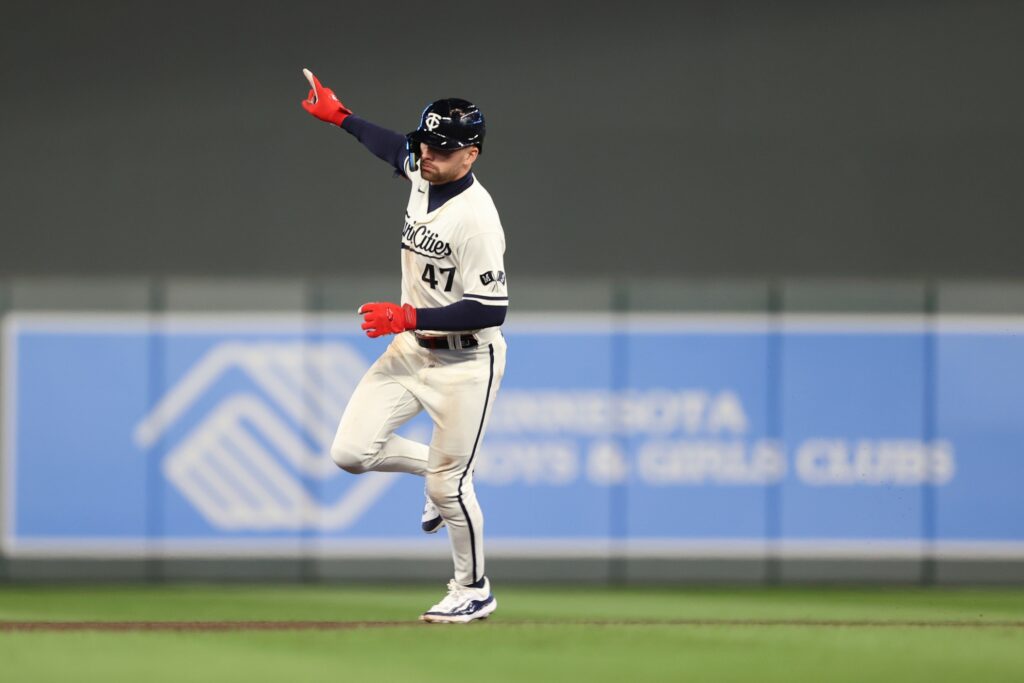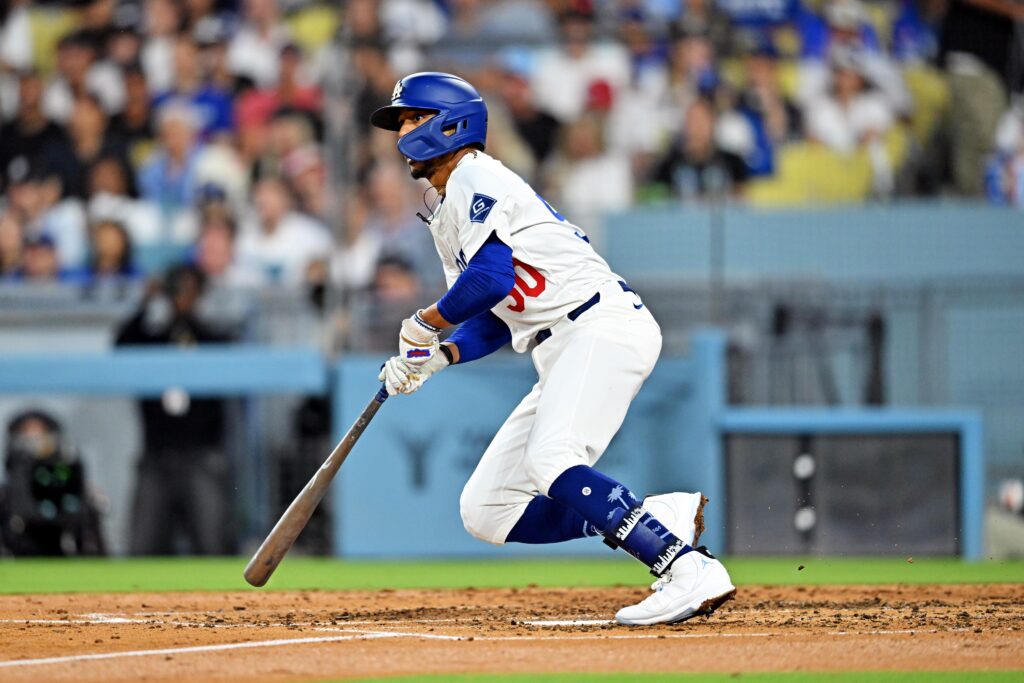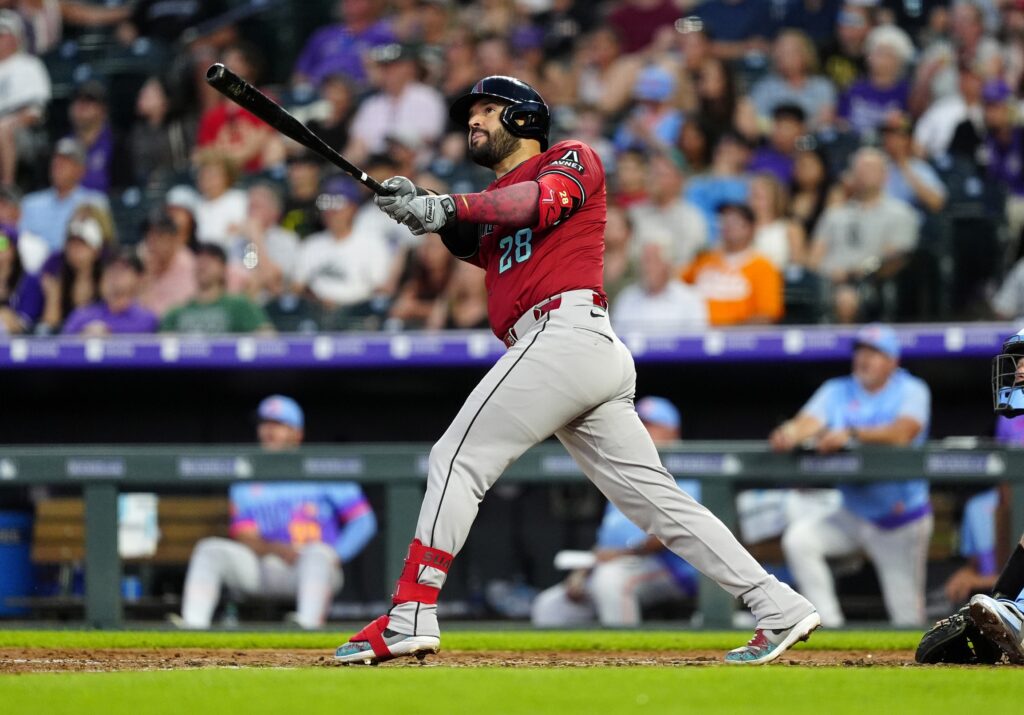Some of the most fascinating stories are those surrounding players on the verge of a breakout season. This can come in different shapes, from hyped prospects to underappreciated regulars. These three players all could be important contributors this season but have some questions surrounding their potential.
Three 2024 Breakouts With Major Questions
Edouard Julien, Second Base
The Minnesota Twins saw a complete offensive renaissance in the second half last season, largely due to young players like Julien becoming everyday features in the lineup. His production came from his selective approach at the plate with the best chase rate in all of baseball. He had an eye-catching batting line of .263/.381/.459 with 16 home runs.
His on-base ability was his greatest strength, but he hits the ball incredibly hard, which helps offset his strikeout numbers. He struck out 31.4% of the time, which is just strange for someone who doesn’t chase. Even though he makes good swing decisions, he doesn’t hit the ball consistently enough when he does swing at pitches in the zone.
Julien, a left-handed hitter, had dismal numbers against lefties (.196/.229/.217), but he crushed righties (.274/.401/.497). Julien might only be a platoon bat if those numbers against same-handed pitching don’t improve, and his strikeout rate dampens any optimism about his long-term ceiling.
He has exhibited incredible selectiveness to maximize this approach, however. Not only does he represent a constant on-base threat, he has drastically improved his defensive performance. There is an impressive upside with a player who can master the strike zone and hit the ball incredibly hard, so Julien’s development this season will be a key storyline for the Twins’ offense.
Ryne Nelson, Pitcher
The Arizona Diamondbacks need better pitching depth than they received last year if they plan to compete again in 2024. Their offseason acquisitions were necessary, but there is room for Nelson to be a valuable piece of this rotation. Currently projected as the fifth starter by RosterResource, Nelson will be looking to improve on his 5.31 ERA over 144 innings. Even though this wasn’t a particularly impressive campaign, he filled innings the Diamondbacks desperately needed.
Nelson has a five-pitch arsenal, but he didn’t extract all the value here that he might in the future. According to Stuff+ on FanGraphs, Nelson’s five pitches all grade out as about league average, with his slider and fastball being slightly more impressive. Opposing hitters did most of their damage against his fastball, though, as his entire approach induced very few swinging strikes or chases on pitches outside the zone. Hitters weren’t fooled and they punished him for it.
Among all pitchers with at least 100 innings pitched last season, he gave up the tenth-hardest average exit velocity, 90.6 mph. Nelson has the pitch variety and stuff to succeed, but he gave hitters too many free opportunities with pitches in the middle of the zone. As his command improves and he utilizes his pitch selection more potently, there’s a chance he could see much better results this year. This doesn’t seem like an impossible jump, as he got demolished on pitches in the middle of the zone last season. Simply avoiding these worst-case scenarios could lead to success.
Michael Massey, Second Base
There’s no guarantee that the Kansas City Royals will be relevant in the playoff race this season, but they have a batch of particularly intriguing players that could become part of the next good Royals team. Massey could be a reliable double-play partner with Bobby Witt Jr. if he takes a leap in his third MLB season.
Massey is aggressive at the plate, sometimes to his detriment by chasing too often with few walks, but he has a fascinating profile that could lead to both power and batting average. His batting line of .229/.274/.381 with 15 home runs over 129 games is almost misleading. His raw exit velocity numbers aren’t incredible, but he ranked in the 86th percentile for sweet-spot percentage. His expected batting average of .260 was much more in line with his potential output. He leans into a pull-heavy approach that could maximize his modest power numbers but also makes him prone to weak fly balls.
Perhaps the most encouraging sign of Massey’s aggressive decision-making is how his contact ability improved down the stretch. Here are some key numbers that point to Massey’s 2023 being a tale of two halves.
First half: 28.2% K-rate, 83.3% Zone-Contact rate, 8.2% SwStr rate, .597 OPS
Second half: 15.4% K-rate, 91.5% Zone-Contact rate, 12.9% SwStr rate, .705 OPS
In the second half, Massey nearly cut his strikeout rate and whiff rate (SwStr) in half while making more contact on pitches in the zone. These are all highly encouraging and show he could truly become a valuable hitter. Even during this improved stretch in the second half, the results (.237 batting average) still looked poor due to a wildly low batting average on balls in play (.238). Massey’s improved contact ability, plate discipline, and sneaky power point to a potential breakout. He will need to maintain this approach to do more damage as a hitter.
Will these players find a way to level up their game in 2024? No player is perfect, so they will have to patch up their weaknesses. But their contributions this season could establish them as important pieces in their franchises’ path to success.
Main Image: Jesse Johnson-USA TODAY Sports



